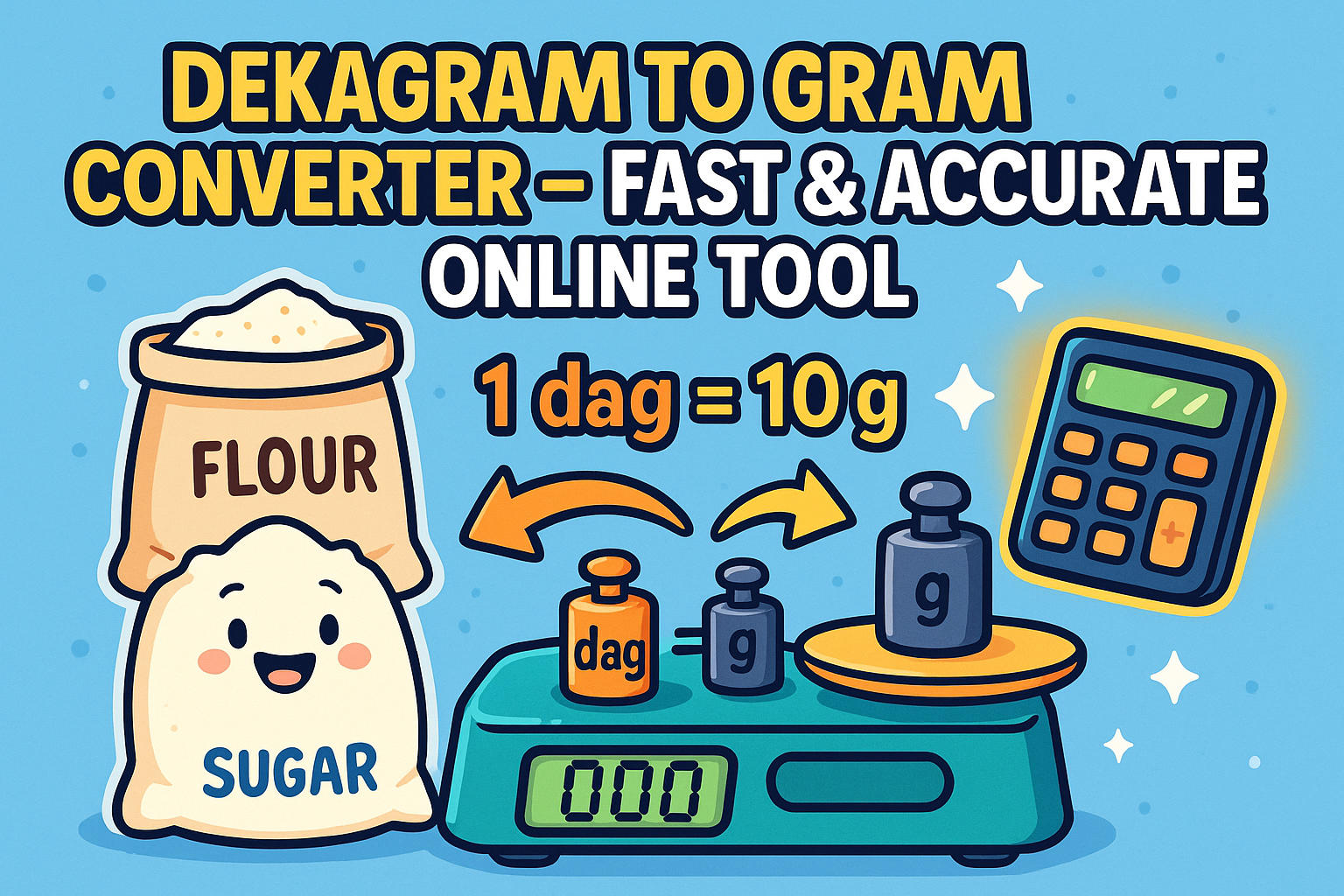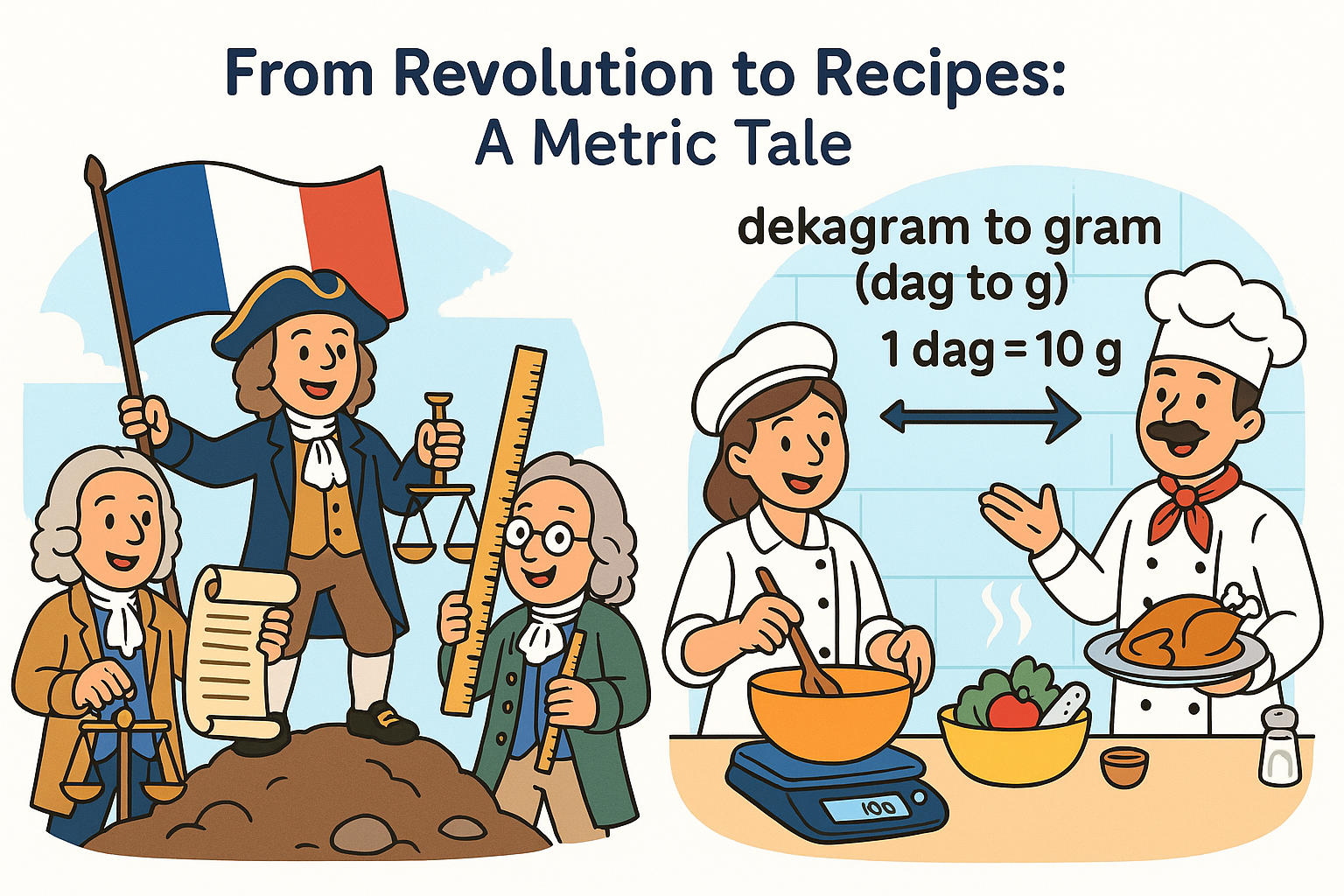dekagram to gram – How to convert dag to g
Converting dekagram to gram (dag to g) is a simple process, but it’s important to understand the context and background of each unit to use the conversion effectively—especially in cooking, science, and education. This guide from JetCalculator will not only show you how to convert dag to g but also provide interesting facts, history, and practical value for everyday users.
Whether you're working on recipes or classroom experiments, using an accurate unit converter like JetCalculator makes the task fast and reliable.

What Are Dekagram and Gram?
A dekagram is a unit of mass in the metric system equal to 10 grams. It is not as commonly used in English-speaking countries but is frequently found in European recipes and scientific contexts. The prefix “deka” (or deca) means ten, originating from the Greek word deka.
A gram is one of the base units of mass in the metric system. It is used globally for everyday weight measurements—such as ingredients in cooking or the mass of small objects. The gram is a metric standard, defined originally as the mass of one cubic centimeter of water at 4°C.
How to Convert Dag to G?
The formula is straightforward:
1 dekagram (dag) = 10 grams (g)
For example, if you want to convert:
-
5 dag = 50 g
-
12.3 dag = 123 g
-
0.7 dag = 7 g
To make it even easier, use JetCalculator’s weight converter for multiple unit conversions and instant accuracy.
Did You Know?
About Dekagram:
-
In several European school systems, students are taught to use dekagram when learning about the metric system because it fits cleanly between grams and hectograms, providing logical stepping stones for understanding.
-
Hungarian and Czech recipes often list ingredients in dekagrams rather than grams, making it essential for anyone trying authentic regional dishes.
-
The dekagram was one of the earliest introduced units when the metric system was developed during the French Revolution in 1795.
About Gram:
-
The gram was first defined in 1795 as “the absolute weight of a volume of pure water equal to the cube of the hundredth part of a meter” – part of the revolutionary move toward scientific standardization in France.
-
Many food labels and nutrition charts worldwide use grams exclusively—making this unit one of the most recognized and standardized measurements globally.
-
In the movie Breaking Bad, precision in gram-level measurements plays a major role in the plot’s scientific integrity and narrative tension.
From Revolution to Recipes: A Metric Tale
In 1795, during the French Revolution, scientists were commissioned to redefine weights and measures to bring order and equality across the nation. The result? The metric system, designed to be logical, scalable, and easy to adopt.
The dekagram, along with units like meter and liter, was born from this scientific and social revolution. While some metric units like the centimeter and kilometer quickly gained popularity, the dekagram stayed somewhat niche, mainly used in scientific or culinary contexts across Central Europe.
However, with the globalization of recipes, international trade, and science education, the dekagram is now experiencing a quiet resurgence—especially in digital tools like JetCalculator, where users worldwide convert quickly and with confidence using our versatile conversion tools.

Conclusion
Whether you're following a traditional European recipe or calculating material weights in a science project, understanding how to convert dekagram to gram is both practical and empowering. With the easy formula of 1 dag = 10 g, or with the help of our unit converter and weight converter, you can handle metric mass conversions with accuracy and speed.
From historical revolutions to modern kitchens, these units tell a fascinating story of science, culture, and everyday usefulness.
Try the JetCalculator conversion tools today—precision made simple.

